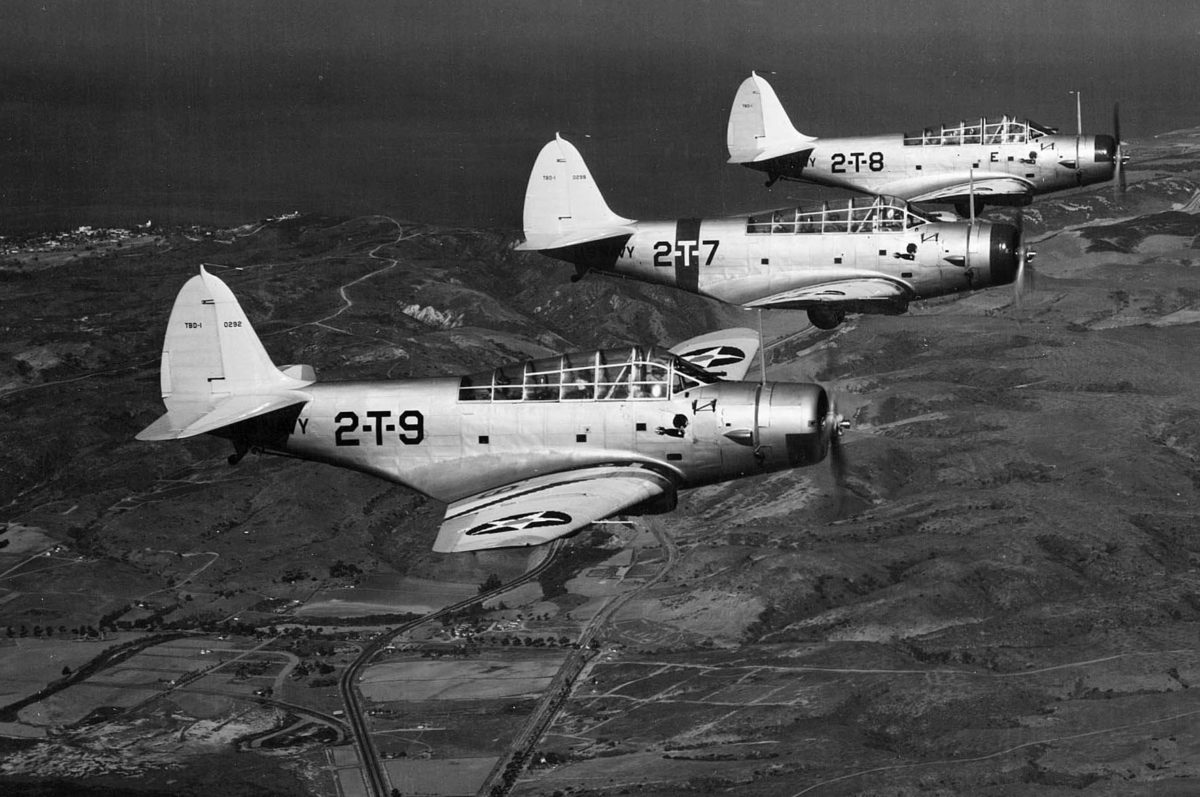What’s in a name? In June 1941 the U.S. Navy proposed a list of popular names for its aircraft. Almost none were accepted, and a final list was issued in October. In those four months Grumman’s F4F went from Comet to Wildcat, the Douglas SBD from Mohave to Dauntless and Consolidated’s PBY from Clemente to Catalina.
Meanwhile, the Douglas TBD entered history and legend not as the Scorpion but as the Devastator. It became one of the most ironic names in aviation history.
In the 1930s U.S. naval aviation recognized that technological progress was accelerating. Torpedo squadrons flew Great Lakes and Martin biplanes with top speeds under 125 mph. Consequently, in June 1934 the Bureau of Aeronautics sought torpedo bomber proposals from three companies: Great Lakes, Hall and Douglas. Great Lakes and Hall took themselves out of contention with obsolete concepts, leaving the field to Douglas.
In Santa Monica, Donald Douglas’ design team got to work. The result was the XTBD-1 (Experimental Torpedo Bomber, Douglas), a three-seat, all-metal monoplane with hydraulic folding wings and semi-retractable landing gear behind an 800-hp Pratt & Whitney radial engine.
Douglas delivered the prototype in less than 11 months, with the first flight in April 1935. Navy testing proceeded at Naval Air Station Anacostia in Washington, D.C., and at Norfolk, Va. Following ordnance compatibility tests, the big Douglas returned to the West Coast for carrier suitability trials aboard USS Lexington by year end. Three pilots logged 13 launches and landings without significant problems. The TBD’s huge 420-square-foot wing area yielded a solid, stable platform in landing configuration.
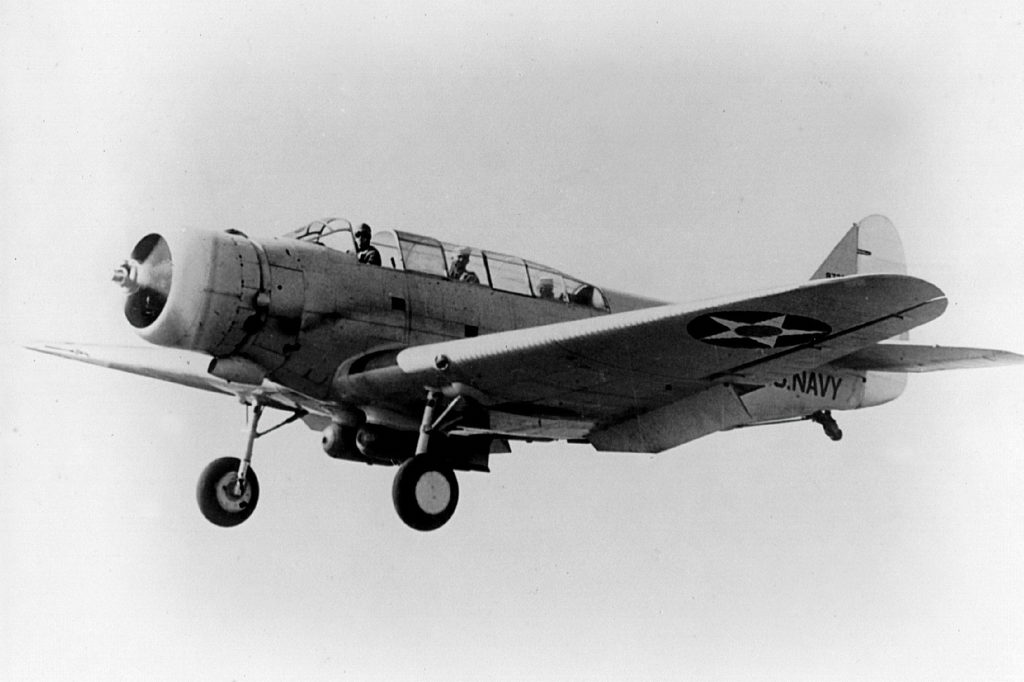
The production TBD-1’s engine was upgraded to 900 hp, yielding a stated top speed of 205 mph. Visible modifications were relatively minor, mostly to canopy and engine cowling.
The 129 fleet aircraft began arriving in 1937, equipping “TorpRons” on Lexington and Saratoga, followed by Yorktown, Enterprise and Hornet through 1941. Ranger, commissioned in 1934, and Wasp, in 1940, had been built without torpedo storage but received some capability in 1941.
Along with Vought’s SB2U scout bomber (later dubbed Vindicator), the TBD brought the monoplane era to U.S. carrier aviation. The TBD was a generational jump for naval aviation, and squadrons often struggled to master “all these new gadgets” that were previously unknown. Retractable wheels and power-folding wings were particularly noteworthy. According to legend, when the first TBD landed aboard a Pacific Fleet carrier, folding its wings while taxiing, a nervous sailor hit the crash alarm.
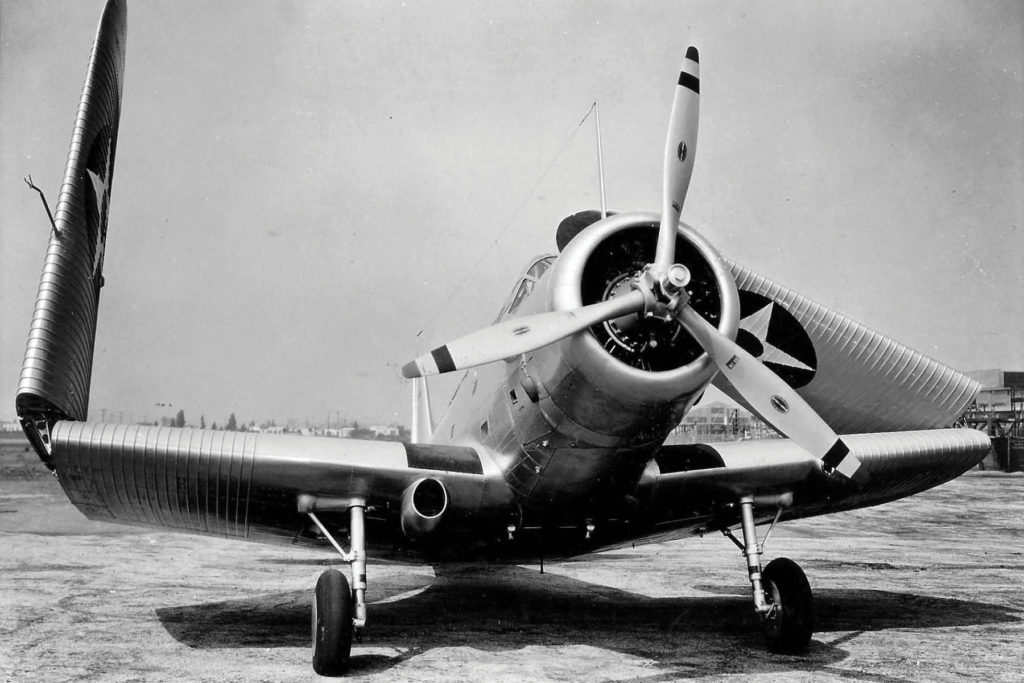
The new Douglas torpedo bomber was impressive with its streamlined profile, polished aluminum fuselage emblazoned with tail and unit markings plus chrome-yellow wings. A noncommissioned aviator, Aviation Pilot Wilhelm “Bill” Esders, recalled upon reporting to Saratoga at San Diego in 1938: “I observed several beautiful shiny monoplanes landing and I thought, ‘That is the most beautiful aircraft I have ever seen.’ I just wished that someday I would have the opportunity to fly it, not aware that they belonged to the squadron to which I was ordered. I was overwhelmed upon reporting to learn that the planes I saw were VT-3 aircraft. Such beauties!”
Even with modern aircraft arriving, the Navy showed a technological deficit when Europe went to general quarters again in 1939. That year 55 percent of U.S. carrier aircraft were biplanes, with full monoplane replacement extending into the next year.
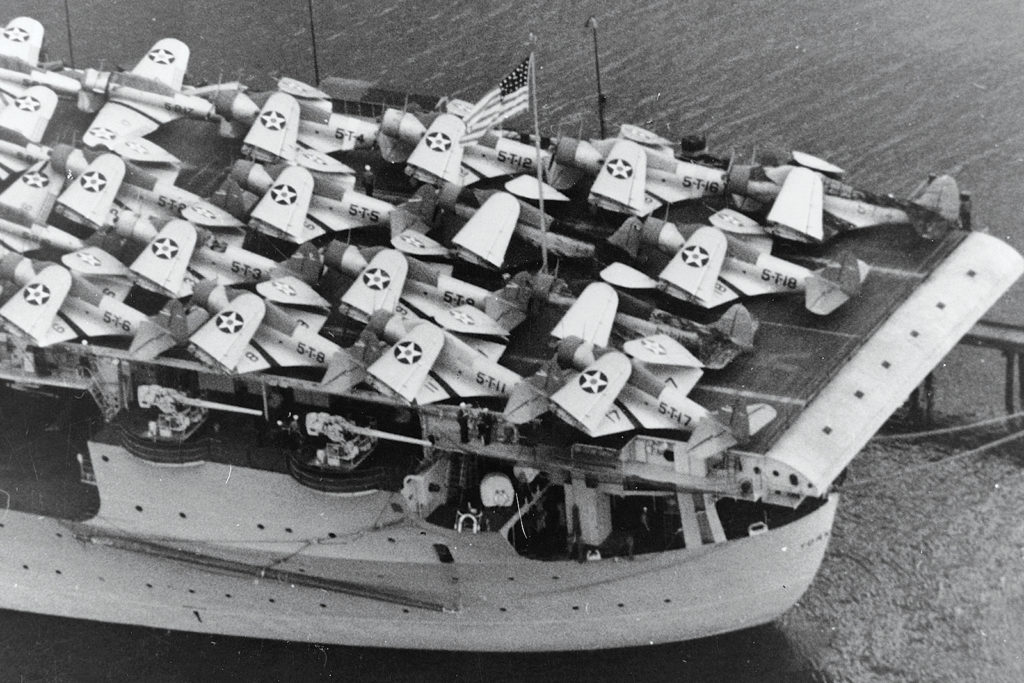
Meanwhile, far beyond the International Date Line, in 1937 the Imperial Japanese Navy fielded the Nakajima B5N, the Type 97 carrier attack bomber later dubbed Kate by the Allies. The wartime B5N2 was capable of 230 mph at 12,000 feet and routinely flew 300-mile-radius missions. Thus, it was 25 mph faster than the TBD and longer ranged. But, more significant, while U.S. torpedoes were woefully erratic, Japanese “fish” worked just fine.
Before the war, economic measures limited realistic training. Torpedo pilots were supposed to make one live drop annually but that goal was seldom achieved. The interest on that debt would be paid in combat during 1942, a year before the ordnance bureaucracy finally admitted to a long, dolorous list of defects in torpedoes for ships, submarines and aircraft. Throughout the war, nearly all the advances in torpedo technology came from industry rather than the Navy.
Machinist Mate Thomas F. Cheek, an experienced enlisted aviator with Torpedo Squadron 2 (VT-2) on Lexington, recalled: “The torpedo units spent a negligible time on gunnery training—horizontal bombing was the major practice, with the NAP [naval aviation pilot] copilot performing the role of bombardier in the second seat. Lack of gunnery training by all rear-seat men was very evident.
“As demonstrated by the Army Air Forces at Midway, horizontal bombing was a lost cause from the beginning. Hits were fairly easy if the target was unmoving on land, or a towed sled or vessel that maintained a fixed course and speed. We tried a variety of formations and patterns, with sorry results, but the powers that be kept us trying.
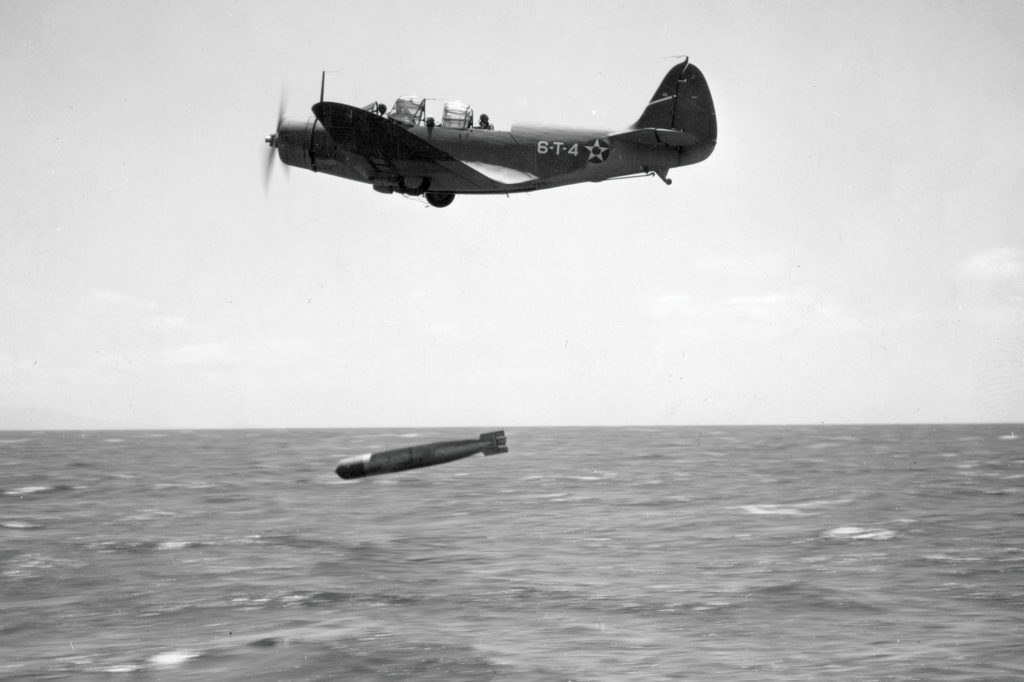
“Simulated torpedo runs were seldom carried out, other than during fleet problems or local maneuvers. Once a year each pilot was to make a live drop with a dummy head on a real torpedo. We made no drops in 1939. In 1940 we made two dry runs on a target towed by a minesweeper or tug. Then the big day, taking off from North Lands, San Diego, with a Mark 13 hanging out of the bomb bay!”
Describing his first live drop, flying with A.C. Weddel, Cheek said the Mark 13 released within limits of 90 knots at 100 feet. (In combat most squadrons observed drop parameters of 110 knots at 50 feet or less.) “It ran true for the first 100-150 yards,” Cheek recalled, adding that the torpedo “then veered 60 degrees to port and took off over the surface like a happy trout.
“My drop emulated Weddel’s at the start, then veered slightly starboard with a dead bead on the minesweeper. Thankfully, instead of frolicking over the surface, it ran true to depth and passed under the tug.
“From the scuttlebutt going around at Pearl, ours was not an isolated incident.”
Despite these torpedo problems, the Navy developed optimistic tactics for carrier air groups. The ideal scenario was a coordinated attack on an enemy fleet, with scout bombers laying smoke screens to cover the torpedo bombers’ low and slow approach while dive bombers rolled in from overhead and fighters engaged defending interceptors. It never happened in combat, and some realists recognized the facts. “Our peacetime torpedo training procedure was far more theatrical than practical,” wrote Torpedo 3’s leader, Lt. Cmdr. Lance E. Massey. He predicted with chilling prescience that an unescorted torpedo attack against an alerted task force would prove disastrous.
In all, 12 Navy squadrons flew TBDs, including a handful in Atlantic Fleet bombing and scouting units. In the 3½ years before Pearl Harbor, the Navy lost 30 TBDs to accidents and two more in January 1942. Thus the fleet entered the war with 97 torpedo planes in deployable squadrons and a small fleet replacement pool.
On the morning of December 7, 1941, the Enterprise task group was returning to Hawaii after delivering aircraft to Wake Island. Operating on a war footing, Vice Adm. William F. Halsey sent 17 SBDs to scout ahead of the force as a precaution. They were caught by planes from six Japanese carriers, sustaining seven losses. America was at war.
With tentative information, the “Big E” launched a combined strike group, including all 18 of Torpedo 6’s TBDs. Finding nothing, the bombers returned to the ship while the fighters diverted to Pearl, where four of six were shot down.
Thus began the early phase of the Pacific War, a series of hit-and-run raids on far-flung Japanese bases. On February 1, 1942, Enterprise raided the Marshall Islands, sinking three Japanese ships. Lieutenant Commander Eugene Lindsey’s VT-6 lofted nine bombers against Wotje Atoll and nine more against Kwajalein in the first aerial torpedo attack in U.S. history. Lacking fighter opposition, the Devastators escaped almost untouched, but
the squadron report noted, “Fighter protection for VT is mandatory.”
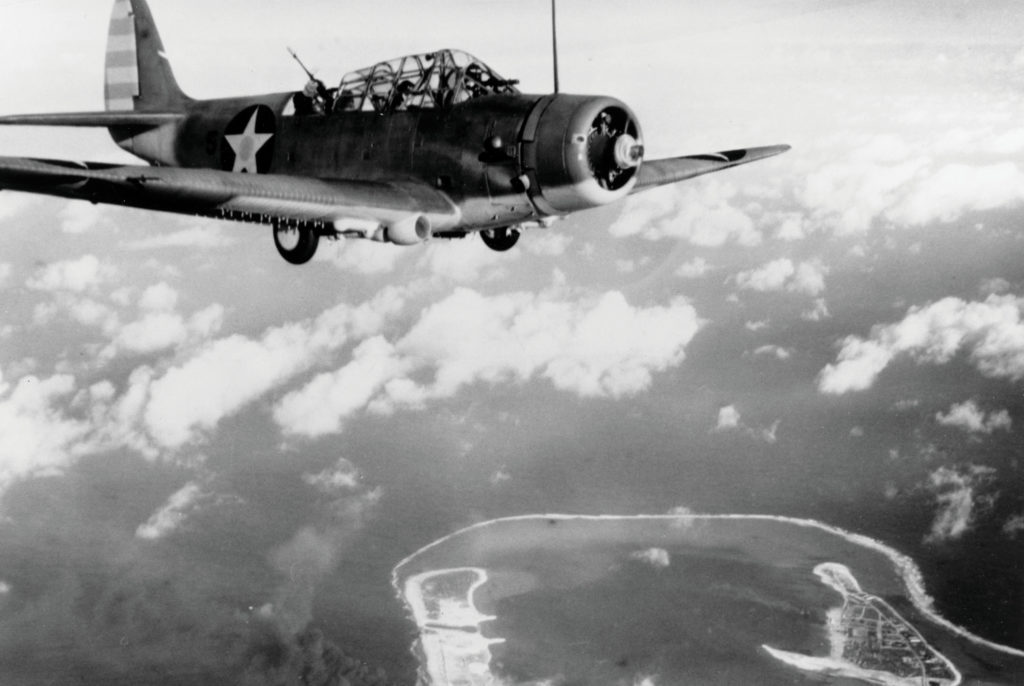
That same day Yorktown struck the Gilberts with marginal results and serious losses. Miserable weather apparently cost VT-5 six planes and several aircrews in exchange for two Japanese vessels damaged by the air group.
On February 24 Enterprise returned to Wake Island, where it had delivered Marine fighters in late November. The TBDs bombed from 12,000 feet, inflicting little damage but sustaining no losses. Barely a week later the Big E struck Marcus Island, 1,150 miles from Tokyo, without launching torpedo planes.
Certainly the most ambitious Devastator operation was the joint Lexington–Yorktown strike in New Guinea. On March 10 Vice Adm. Wilson Brown’s two air groups coordinated simultaneous attacks on Lae and Salamua on the east coast. Both ships put up 52 aircraft, including 13 of “Lex’s” Torpedo 2 and 12 from “Yorky’s” Torpedo 5.
Lieutenant Commander James Brett’s VT-2 carried Mark 13 torpedoes while Lt. Cmdr. Joseph Taylor’s VT-5 packed 500-pound bombs. The Owen Stanley Mountains’ craggy verdancy posed a problem for the heavily laden Lexington aircraft toting the one-ton Mark 13s, but Brett shrewdly read the geography and used rising thermals to clear the 7,500-foot pass. He found 14 Japanese ships offshore and attacked with the dive bombers, torpedoing a transport in shallow water. However, other fish malfunctioned.
Shortly thereafter, Taylor led his squadron overhead at 13,000 feet for a conventional bombing run. At least one of the 24 bombs struck a seaplane tender, flooding the engine room. As the TBDs pulled off, a Nakajima E8N2 floatplane made a gunnery pass, meeting a hail of return fire. Postwar evaluation showed the Japanese biplane landed and sank.
Combined with U.S. Army and Australian efforts, the Lae-Salamua strike garnered headlines in the U.S. The Pacific command claimed 10 ships sunk, including three cruisers (actually three transport ships), for the loss of an SBD-2.
The Devastator appeared to be earning its name, but the first week in May set the TBD on its way to retirement. Devastators from Yorktown participated in two strikes against the new Japanese base at Tulagi near Guadalcanal. Neither mission accomplished much. The first scored one hit on a destroyer from 11 torpedo drops while another failed to release. On the next mission another destroyer dodged all 11 fish, and though some floatplanes intercepted, they did no harm. However, a VT-5 crew ditched offshore after getting lost in weather and experienced a two-month odyssey returning to safety.
Then, on May 7, millennia of naval warfare abruptly ended at the Battle of the Coral Sea. U.S. intelligence had learned of Japan’s plan to seize Port Moresby on New Guinea’s south coast, and the Pacific Fleet positioned Lexington and Yorktown task forces to repel the enemy invasion force. On the opening day the Americans had things entirely their way. Lex and Yorky launched 93 planes against the Japanese covering force built around the light carrier Shōhō. It was a huge overmatch: The 22 “torpeckers” added their weight to 71 scout bombers and fighters.
Arriving first, Jimmy Brett’s TBDs skirted the screen of four Japanese cruisers and executed a peacetime coordinated attack with the SBDs. In a textbook “anvil” tactic, Lex’s Devastators hemmed in Shōhō from both bows, claiming nine hits; they probably got at least five.
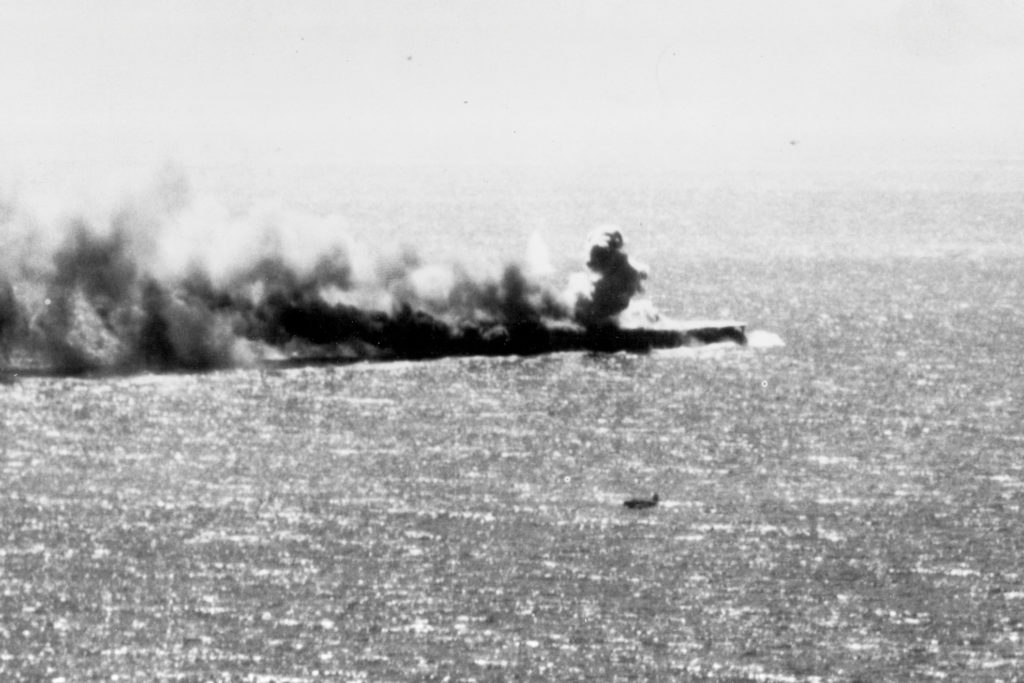
Japanese fighters were largely tied up by Wildcats, leaving the strikers to finish the job. Minutes behind came Joe Taylor’s 10 Yorktowners, who pressed in close, as they reported, “to make it almost impossible to miss.” The squadron claimed 100 percent hits and likely gained two. Little Shōhō succumbed to perhaps 20 bombs and seven torpedoes at a cost of three F4F-3s.
Aboard the U.S. carriers, ready rooms were filled with jubilant aircrews celebrating the news of the historic victory.
The next day, as before, scouting determined the course of the battle. Both sides found the other at about the same time, but the Japanese heavy-weights were faster into action: Shōkaku and Zuikaku lofted 69 planes, inflicting mortal wounds on Lexington and damaging Yorktown.
The U.S. air groups were airborne at the time with 75 planes, including 21 torpeckers. Like the previous day, the outbound leg was about 170 miles—a bit of a stretch for TBDs.
When Yorktown’s SBDs sighted the Japanese flattops, the strike leader orbited to allow the TBDs to catch up, hoping for a coordinated attack. The intended victim was Shōkaku, visible under clear skies, and the Japanese carrier absorbed two bombs. Torpedo 5’s fish all missed but the Devastators got away clean.
Half an hour later Lexington’s squadrons piled on. Dauntlesses hit Shōkaku again—nonfatally—while Zuikaku evaded damage. Torpedo 2’s 11 Mark 13s all missed or malfunctioned—as a Japanese report summarized, “slow torpedoes and long range.” One plane ditched out of fuel with the crew lost. When Lady Lex succumbed to fuel fires that evening, however, she took all of VT-2’s remaining aircraft to the bottom.
Tactically the Battle of the Coral Sea was a Japanese victory, as Lexington was far more valuable than Shōhō. But strategically a major Japanese operation was frustrated, and Port Morseby remained in Allied hands.
Coral Sea was the first naval battle in which neither fleet saw the other. It set the pattern for carrier warfare throughout the rest of the conflict.
In late May U.S. intelligence provided Admiral Chester Nimitz with a priceless advantage: detailed information on the Japanese plan to seize Midway Atoll. He dispatched his three carriers to spring one of history’s great ambushes: Enterprise and Hornet in Task Force 16 and Yorktown, still bearing Coral Sea damage, with Task Force 17. They were opposed by four veteran Imperial navy flattops.
On May 30 Torpedo 6’s CO, Lt. Cmdr. Eugene Lindsey, spun in while landing aboard Enterprise. He was recovered with a badly sprained back but pronounced himself fit for duty.
At dawn on June 4, the three Pacific Fleet carriers steamed northeast of Midway, opposing a Japanese effort to seize the atoll. Around 0700 they began launching 41 TBDs. Three hours later four Devastators had returned.
In five months of combat through Coral Sea, TBDs had suffered no inflight losses to enemy action. Escorting fighters were assigned to each TorpRon, which increased the torpedo bombers’ odds of survival. But at Midway almost nothing went according to plan.
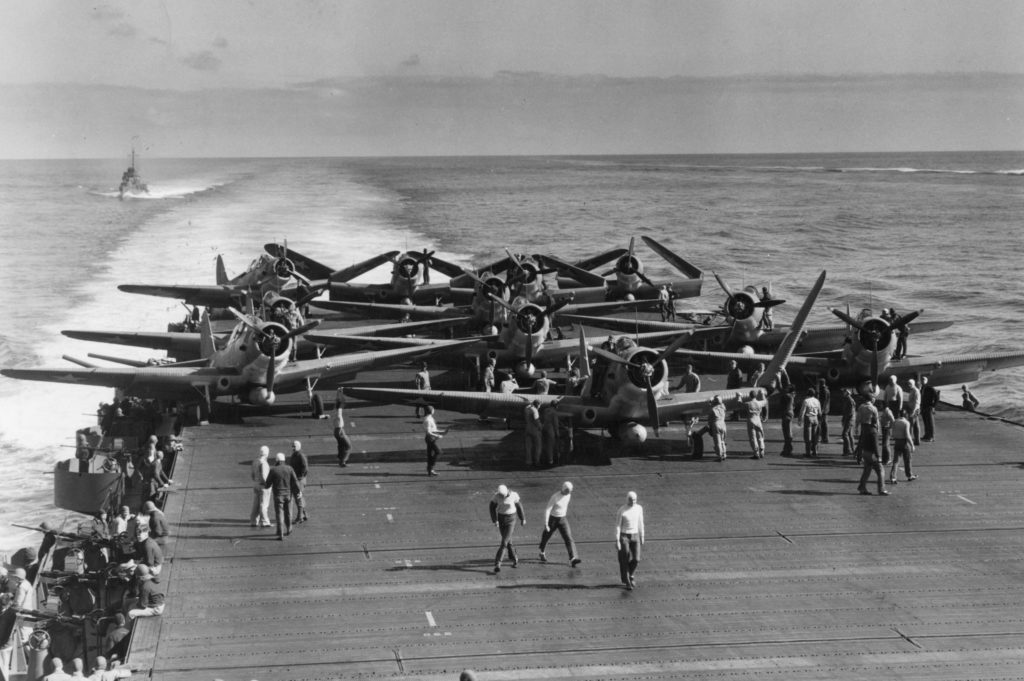
Outbound from TF-16, Hornet’s martinet air group commander, Stanhope C. Ring, led the “mission to nowhere” due west, running 10 Wild-cats out of fuel with a couple of SBD-3s. Torpedo 8’s independent-minded CO, Lt. Cmdr. John Waldron, had a sense of the battle’s geometry and broke off, leading his 15 planes southwest. He had told his men, “If only one of us is left to make a run, I want that man to go in and get a hit.”
Fourteen TBDs splashed from heavy flak and fighters, leaving Ensign George Gay to fulfill the skipper’s order. Gay dropped his torpedo against Sōryū, missed and almost immediately went into the water. His gunner went down with the plane but Gay was rescued to tell different versions of his survival for 50 years.
Next up was the injured Gene Lindsey with 14 Devastators from VT-6. He was supposed to have escorts but the VF-6 Wildcats at first apparently mistook VT-8’s TBDs for their own and missed the rendezvous. Attacking Kaga, Torpedo 6 met a wall of flak and a sky full of slashing Zeros. Four returned to the Big E.
Finally, about an hour after VT-8, the York-towners arrived. Most were replacements from Saratoga’s air group, beached while “Sara” was repaired. Benefitting from recent combat reports, Yorktown’s staff did it right—a gas-saving “running rendezvous” rather than circling to join up over the task force.
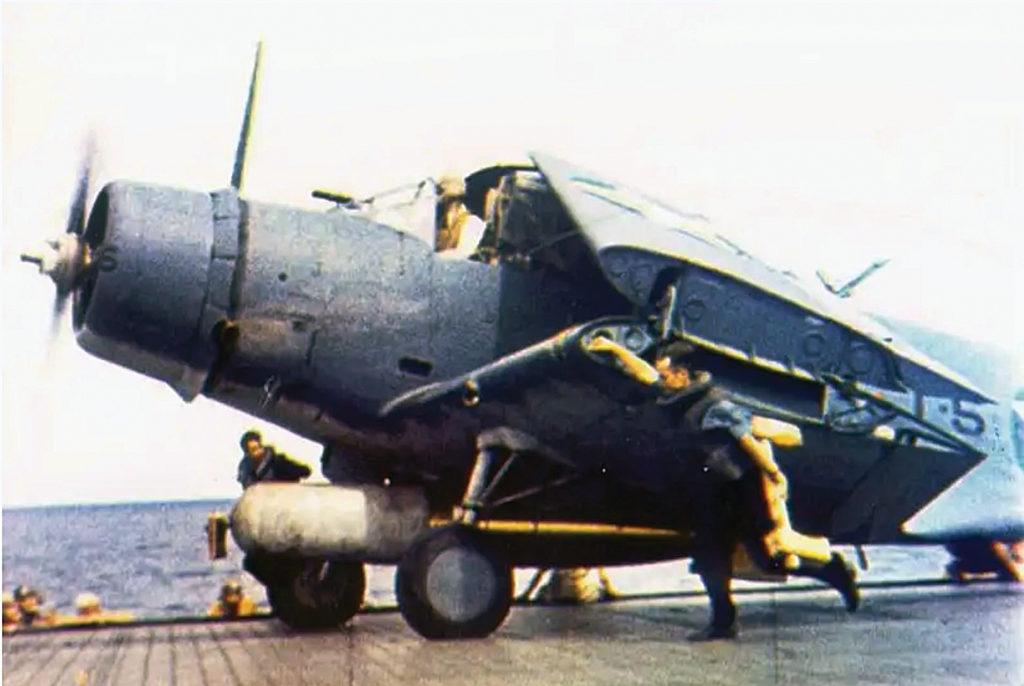
With Lt. Cmdr. Lance Massey navigating, Yorktown’s fliers found their target and concentrated on Hiryū. Lieutenant Commander John Thach’s six Wildcats were far too few to oppose some 40 Zeros, and Massey’s squadron was shredded. He died with nine of his crews while two ditched near the task force. One was flown by Bill Esders, who pulled his fatally wounded gunner, Radioman Robert B. Brazier, into their raft. “He bled to death,” Esders said. “Yet this young man was still able to talk, expressing how badly he felt that he wasn’t able to perform better or longer.
“That was the kind of men we had in Torpedo Three.”
While the TBDs were slaughtered, the Japanese fighters were drawn down near sea level. That left the approach clear for three squadrons of SBDs, and the sky rained Dauntlesses. In minutes Akagi, Kaga and Sōryū were fatally stricken. That afternoon the SBDs returned, slaying Hiryū. The battle ended early on June 7 with Yorktown, weakened by bomb and torpedo damage, finished off by submarine I-168.
The Devastator’s combat log ended that day with a total of 176 sorties resulting in action against enemy forces. In those six months TBDs averaged just under two missions per wartime airframe: 131 with torpedoes and 45 with bombs or depth charges.
After Midway the remaining 39 Devastators were withdrawn from fleet service, quickly replaced by TBF-1 Avengers. The TBDs went to training and utility units or became instructional platforms. The last were scrapped in 1944.
The notion that TBDs were “suicide coffins” loses some credibility when the airplane is compared with its contemporaries. In the first action by a TBF squadron, VT-8 flew six Avengers from Midway and only one returned.
At Coral Sea and Midway, Devastators sustained 42 percent inflight losses to enemy action. The TBD’s rival, the B5N Kate—clearly superior with excellent torpedoes—was close behind with 37 percent. Devastators certainly devastated little Shōhō at Coral Sea but scored no hits in the next five attacks in both battles. Kates, however, contributed to Lexington’s demise at Coral Sea and Yorktown’s at Midway.
And so the TBD Devastator passed into history. The U.S. Navy cared too little to keep or retrieve one.
Frequent contributor Barrett Tillman is the author of nearly 900 articles and more than 40 books, including TBD Devastator Units of the US Navy, which is recommended for further reading. Also see Douglas TBD Devastator: America’s First World War II Torpedo Bomber, by David Doyle; and Douglas TBD-1 Devastator, by Steve Ginter.
This feature originally appeared in the March 2022 issue of Aviation History. Don’t miss an issue, Subscribe!

